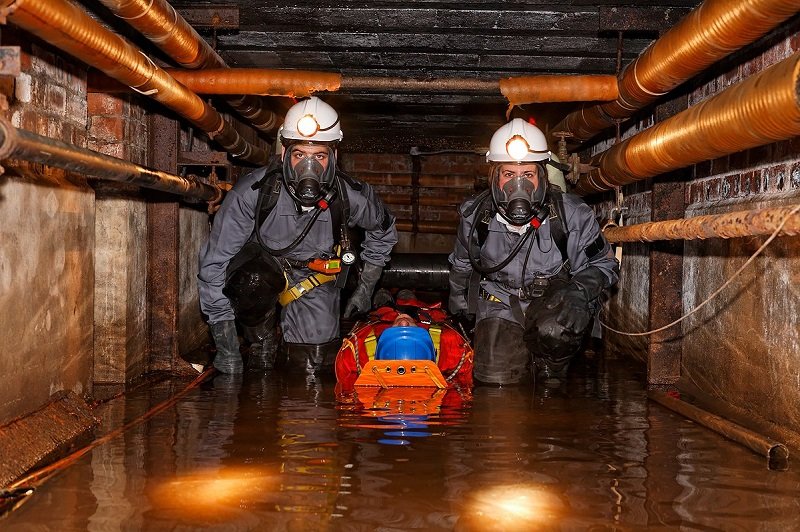What Is The Definition Of A Confined Space?
Confined spaces are any place such as a container, vessel, pit, tank, chamber, bund, cellar or any other similar area that is as a result of its enclosed nature, referred to as a confined space because it generates the possibility of harm, an accident or injury that may require emergency care due to:
1/ The attendance or reasonable conceivable presence of:
- Explosive or flammable environments.
- Harmful vapour, gas or fumes.
- A higher level of liquid or free flowing solids.
- Surplus of oxygen.
- Exceptionally high temperatures.
2/ A shortage of reasonably predictable shortage of oxygen.

What Are The Primary Characteristics That Defines A Confined Space?
The main physiognomies of a confined area include:
- The space is significantly enclosed.
- A risk exists of at least one of the hazards mentioned above within the area.
- The hazard of severe injury from such a hazard must be generated by virtue of the enclosed disposition of the space.
- The probable injury must be severe and therefore necessitate emergency action for the involved person to be rescued.
What Are The Associated Hazards Of Confined Spaces?
The potential hazards linked to confined spaces are the primary reason why workers must have a confined space ticket in order to work in such areas. These potential hazards include:
-
Toxic Environment
A toxic environment might result in various acute influences, including unconsciousness, loss of judgment, or death. A toxic atmosphere might happen as a result of the presence of admission of hazardous substances. Such substances might be present in a confined space for different reasons:
- Lingering from previous storage or processing.
- Arising due to disturbance of deposits or sludge.
- The existence of flames or a fire within the space.
- Seepage from inadequately isolated connecting plants.
- Formation as a result of work processes being carried out within the space.
- Being released from within brickwork or under scale due to work processes.
-
Lack of Oxygen
Oxygen deficiency might be due to the following reasons:
- Movement of air via another gas.
- Different chemical reactions or biological procedures (such as rotting organic matter, burning, rusting of metals, etc).
- Absorption of air on steel surfaces, particularly in damp areas.
-
Surplus of Oxygen
Too much oxygen where combustible materials are present lead to an amplified risk of explosion and fire. Some materials, that don’t burn in air, might burn forcefully or even extemporaneously in a surplus oxygen atmosphere. Understanding industrial oxygen tank sizes is essential for businesses to ensure a reliable and sufficient supply of oxygen for various industrial applications.
-
Explosive Or Flammable Air
A flammable atmosphere poses the risk of explosion or fire. Such an atmosphere might be due to the existence of flammable gases or liquids within the confined space or due to deferral of combustible dust in the atmosphere. If the flammable air within the confined space ignites, an explosion can occur, leading to expulsion of hot gases as well as disintegration of the structure.
-
Free Flowing Solids Or Flowing Liquids
Solids or liquids that flows within a confined space can cause suffocation, drowning, burns or other injuries. Solids which are in powder form might be disturbed within the confined space leading to asphyxiation.
-
Excessive Heat
The enclosed environment of confined spaces can enhance the risk of heat stroke or a person collapsing due to heat stress, if the conditions are overly hot. The risk might be aggravated by the wearing of protective gear or due to a lack of ventilation.




